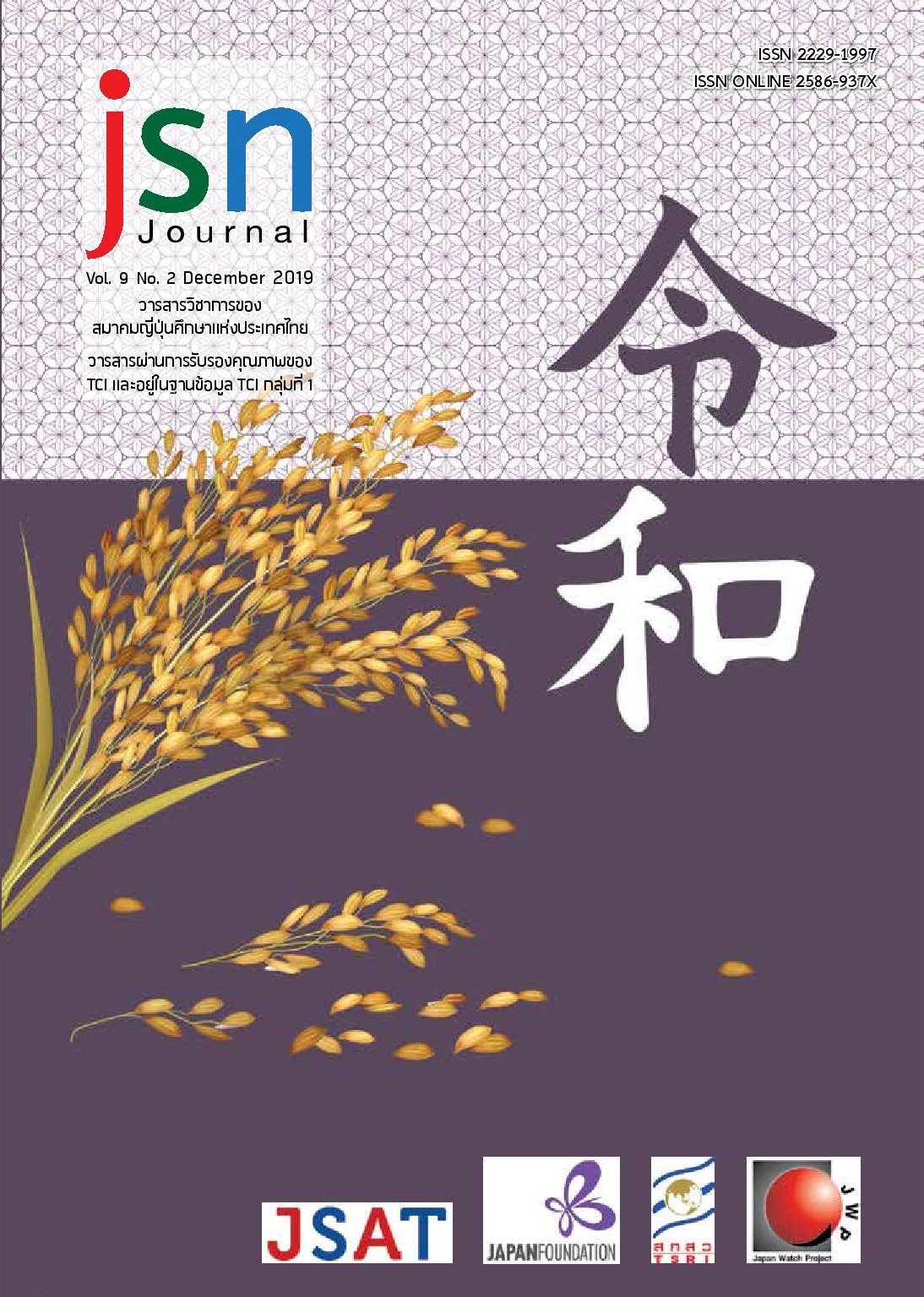Analysis of Japanese Four-character Idiomatic Compounds with Numbers
Main Article Content
Abstract
This research aims to analyze the general characteristics of Japanese four-character idiomatic compounds with numbers and the connotations of numbers in the four-character idiomatic compounds. Purposive sampling was employed for data collection of the four-character idiomatic compounds from five Japanese idiom dictionaries of four-character idiomatic compounds containing 1,611 idioms.
Research findings affirmed that the general characteristics of Japanese four-character idiomatic compounds with numbers consist of four patterns, i.e. four-character idiomatic compounds with one number, four-character idiomatic compounds with two numbers, four-character idiomatic compounds with three numbers, and four-character idiomatic compounds with four numbers. Presence of word in the four-character idiomatic compounds with numbers comprises three types, for example four-character idiomatic compounds of similar meaning words, four-character idiomatic compounds of opposite meaning words, and four-character idiomatic compounds with same group of meaning. Three aspects of repeated idiom include repeated numbers, repeated characters, and repeated numbers and characters.
The connotations of numbers in the four-character idiomatic compounds infer both amount or quantity and something unrelated to amount or quantity. All numbers in the idiom stand for some nuances because they are not referring to amount or counting but rather denotation of something else.
Article Details
ข้อความและข้อคิดเห็นต่างๆ ในบทความเป็นของผู้เขียนบทความนั้นๆ ไม่ใช่ความเห็นของกองบรรณาธิการหรือของวารสาร jsn Journal
References
ชัญญพร ปริญญาวุฒิชัย. (2543). การเปรียบเทียบสำนวนที่มีตัวเลขในภาษาจีนและภาษาไทย. วิทยานิพนธ์ปริญญามหาบัณฑิต ภาควิชาภาษาตะวันออก. บัณฑิตวิทยาลัยจุฬาลงกรณ์มหาวิทยาลัย.
นภสินธุ์ แผลงศร. (2557). โยะจิจุกุโงะ: สำนวนคันจิประสม 4 ตัวอักษรภาษาญี่ปุ่น. กรุงเทพฯฯ: สำนักพิมพ์แห่งจุฬาลงกรณ์มหาวิทยาลัย.
อรรถยา สุวรรณระดา. (2555). เลข 3 5 และ 7 กับตำนานเทพญี่ปุ่นในโคะจิกิ. เอกสารหลังการประชุมวิชาการระดับชาติ เครือข่ายญี่ปุ่นศึกษาในประเทศไทย ครั้งที่ 5., 275-286
大矢真一・片野善一郎. (1979).『基礎数学選書18:数字と数学記号の歴史』裳華房.
学研辞典編集部. (2014).『用例でわかる四字熟語辞典』 改訂第2版. 学研.
木藤冬樹. (1991).『コノテーシン―感・主観のはざまで―』東京外国語論集第43号.
故事・ことわざ研究会編著. (2012).『早引き 四字熟語大辞典』ナツメ社.
三省堂編修所. (2013).『新明解四字熟語辞典』第二版.三省堂.
ジョルジュ・イフラー. (1988). 『数字の歴史:人類は数をどのようにかぞえてきたか』平凡社.
竹田晃. (2013).『新明解四字熟語辞典』第二版.三省堂 (1998)『四字熟語・成句辞典』講談社.
常光徹・内田順子とその他. (2001).『もう一つの世界―妖怪・あの世・占い―』歴史図鑑国立歴史民俗博物館 編 岩崎書店.
ドゥニ・ゲージ. (1998). 『数の歴史』創元社.
日本漢字能力検定協会. (2012).『漢検四字熟語辞典』第二版.日本漢字教育振興会.
丸山圭三郎. (1983).『文化記号学の可能性/「言葉とは何か」=ソシュール言語学入門』日本放送出版協会 (2014/6/19 : Google blog より転載)
山口まり子. (1997).『J.S.ミルの名辞・本質命題・定義について: ‘denotation’と ‛connotation’を めぐるミルの意味論の予備的考察』 哲學101.

